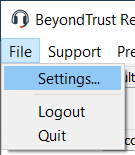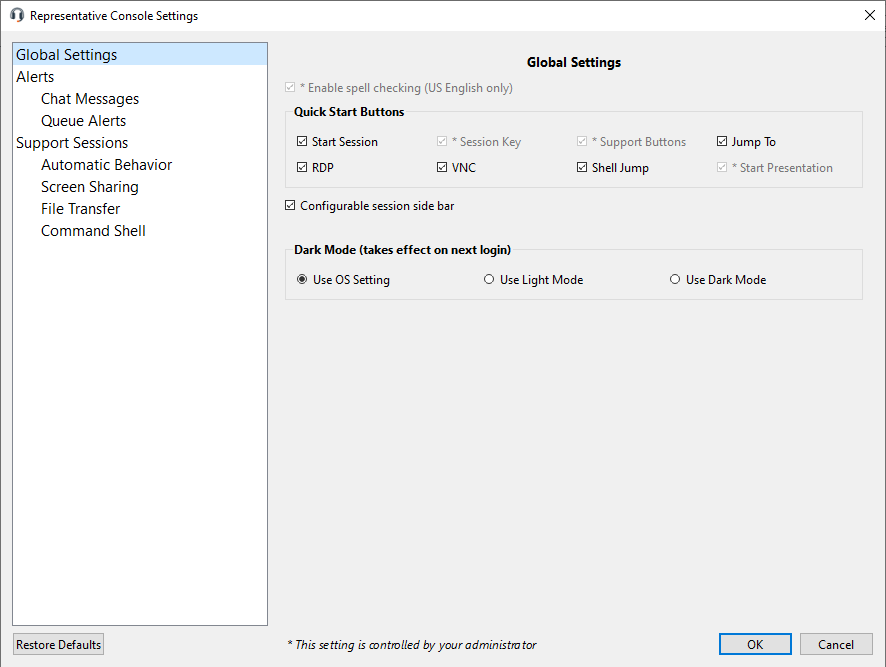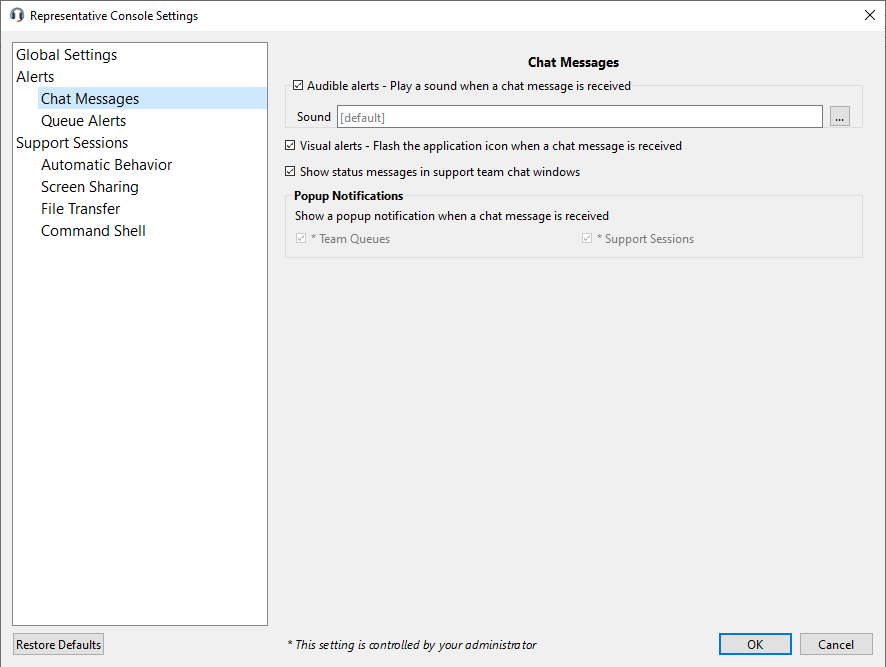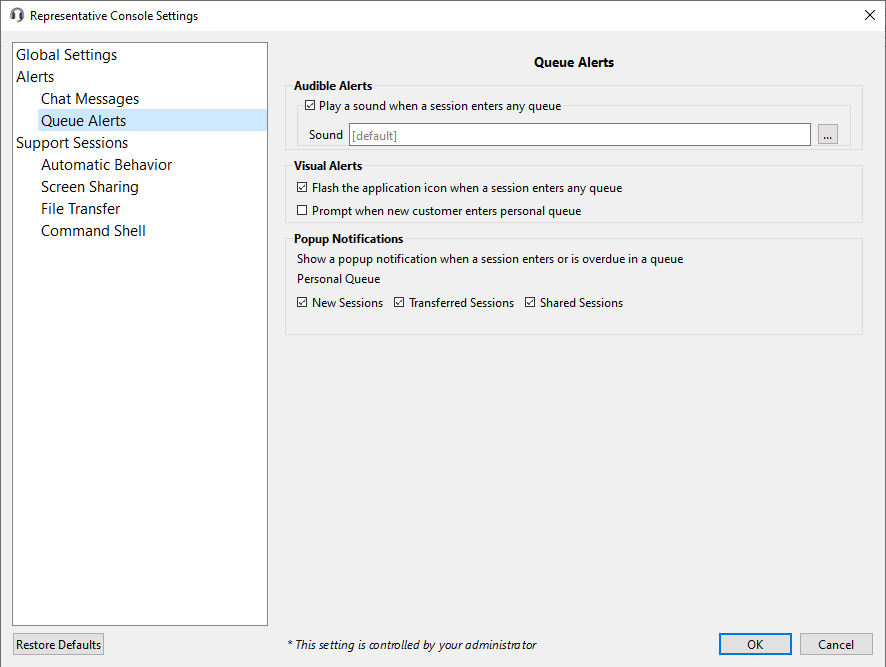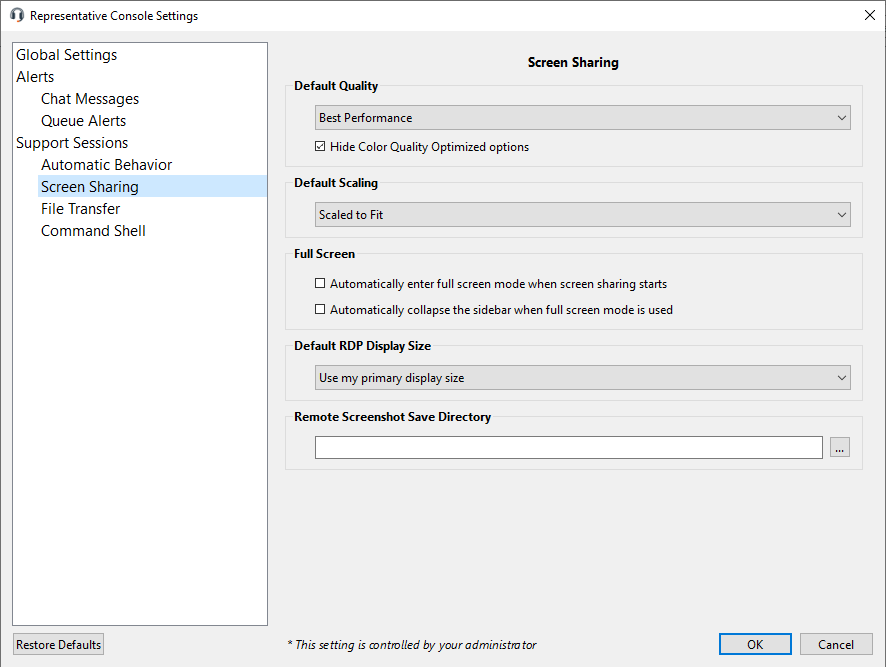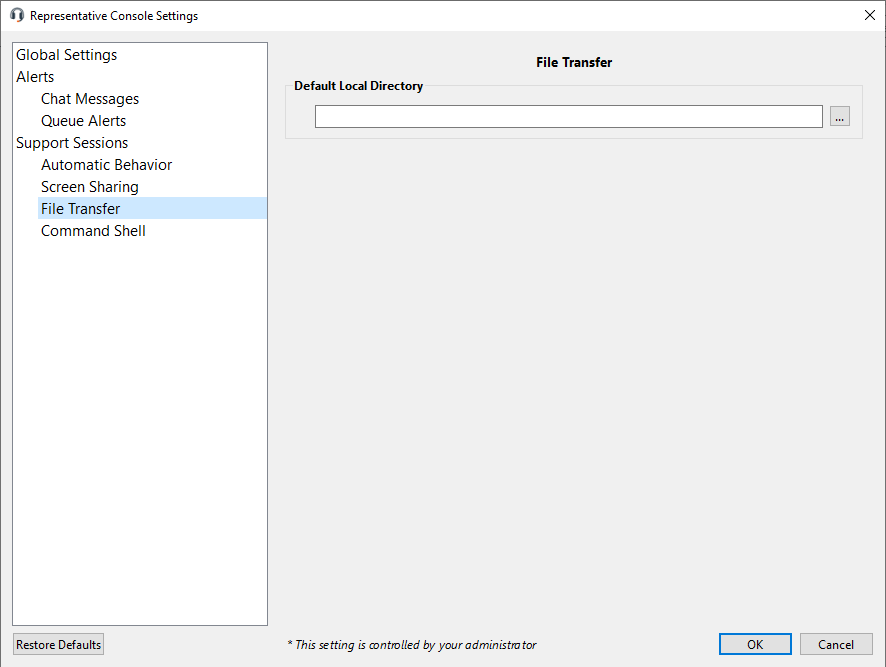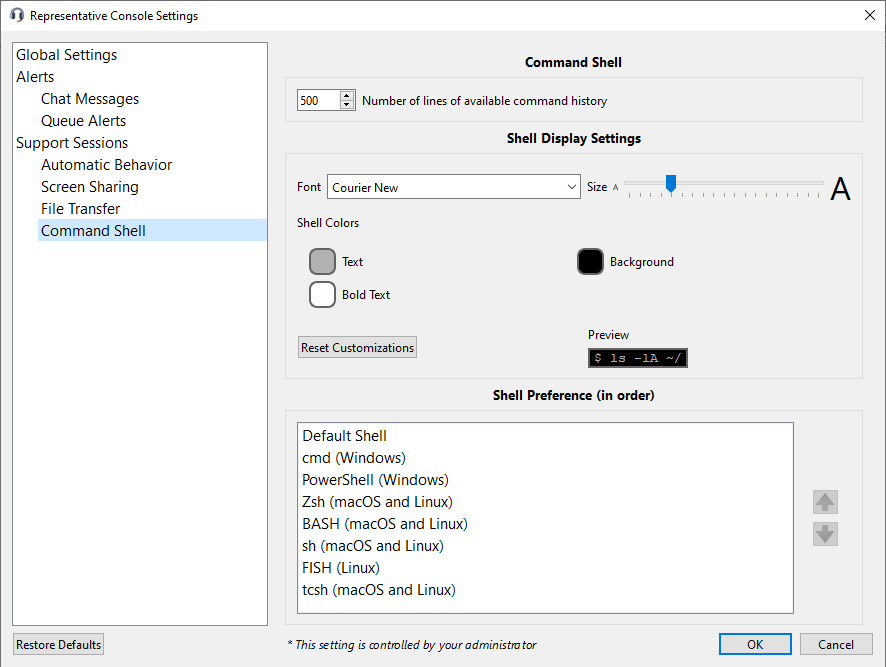Change Settings and Preferences in the Representative Console
Click on File > Settings in the upper left corner of the console to configure your preferences.
In general, you may configure the console settings according to your preferences. However, your BeyondTrust administrator may choose to manage your settings, possibly enforcing those managed settings.
If your BeyondTrust administrator has changed and applied the default settings, then a Settings Changed alert appears the next time you log in to your console. Click View Settings to open your settings window to view the changes, or simply click OK to acknowledge the changes.
Changing Settings
These instructions assume you are allowed to choose the settings used in your console. Settings enforced by your administrator appear marked with an asterisk and grayed out, and they are not locally configurable. Please see your administrator or Manage Representative Console Settings for more information.
Each console settings window includes a Restore Defaults button in the lower left corner of the window. Clicking the button returns all of your settings to the BeyondTrust default settings or to the default settings applied by your administrator, if any have been set. An alert dialog asks you to confirm that you wish to change to the defaults. Click Cancel if you wish to return to your locally saved preferences.
If any of the defaults are forced by your administrator, you are unable to configure them.
From the Global Settings section, you can choose to enable or disable spell check for chat and session notes. Currently, spell check is available for US English only.
If, under Quick Start Buttons, you select Start Session, a Start button appears at the top of your representative console. Clicking this button walks you through the ways your customer can start a support session. You also can select Session Key to display a session key generation button, and select Support Buttons to display a button to launch the Support Button management interface. Select Jump To, RDP,
Choose whether you want the session menu icon to display, whether the sidebar can be detached, and whether the widgets on the session sidebar can be rearranged and re-sized.
If real-time chat translation is enabled for your site, select your preferred chat language from the dropdown menu. This lets the rep console know what language you type in so that chat messages can be translated to the customer's selected language and vice-versa.
You can choose to change your display mode. Options include OS Setting (default), Light Mode, and Dark Mode.
In addition to switching the display mode within the access console, users can change it in OS Settings by selecting Themes and related settings > Color > Choose your color.
The CLI section indicates if a Command Line Interface tool is installed for this installation of the Representative Console. If it is not installed, you can choose to install it by clicking Install.
Choose your alert settings for chat messages. When you receive a chat message, you can choose to hear a sound and to see the application icon flash.
If you would like to upload a custom sound for chat messages, click the … button and select a WAV file on your computer. The file can be no larger than 1MB.
Choose whether the team chat should include status messages, such as users logging in and out, or only chats sent between team members.
Choose whether you want to receive pop-up notifications for messages received in a team chat and/or in a session chat.
Choose if you want to hear an audible alert when a customer enters one of your queues and/or when a waiting session has been marked as overdue. If you would like to upload a custom sound for either of these alerts, click the […] button and select a WAV file on your computer. The file can be no larger than 1MB.
Also choose whether you want to see the application icon flash when a customer enters one of your queues and/or when a waiting session has been marked as overdue. Additionally, when a customer enters your personal queue, such as by clicking on your name or entering a session key on the public site, the session can start immediately or prompt for your acceptance.
You also can choose to receive pop-up notifications for certain events. These notifications appear independent of your console and on top of other windows. Set where you wish to see pop-ups and how long they should display.
Choose whether you want to start sessions with chat only or to immediately request screen sharing.
You can choose to open sessions as tabs in the console or to automatically detach sessions into new windows.
For situations where you might experience issues because a customer’s secure desktop is enabled, you can be prompted to elevate to run with administrative rights when the session begins.
Set the default quality and size for a screen sharing session. When screen sharing starts, you can automatically enter full screen mode, which in turn can automatically collapse the chat bar.
Also when screen sharing starts, the remote system can automatically have its display, mouse, and keyboard input restricted, providing a privacy screen.
Select the default RDP display size for all RDP sessions. An option allows you to open a Remote Support connection expanded across all the monitors on the client computer regardless of the client monitor configuration. With this feature, you can fully utilize all the monitors connected to the client computer, therefore being able to adjust screen sizing and scaling during an RDP session across multiple monitors.
For easier access to screenshots you capture from the console, set the default directory where you will save your console-captured remote screenshots.
For an easier file transfer experience, set the default directory from which you wish to start browsing your local file system.
Set the number of lines to save in the command shell history.
You can change the command shell display by selecting the font type, font size, text color, and background color.
Several options for the default shell are available, including Windows Command Prompt, PowerShell, Zsh, Bash, sh, fish, and tcsh. To set the shell preference order, select each shell and use the arrow buttons beside the list to move the selected shell up or down. Sessions start using the first available shell for the session.
